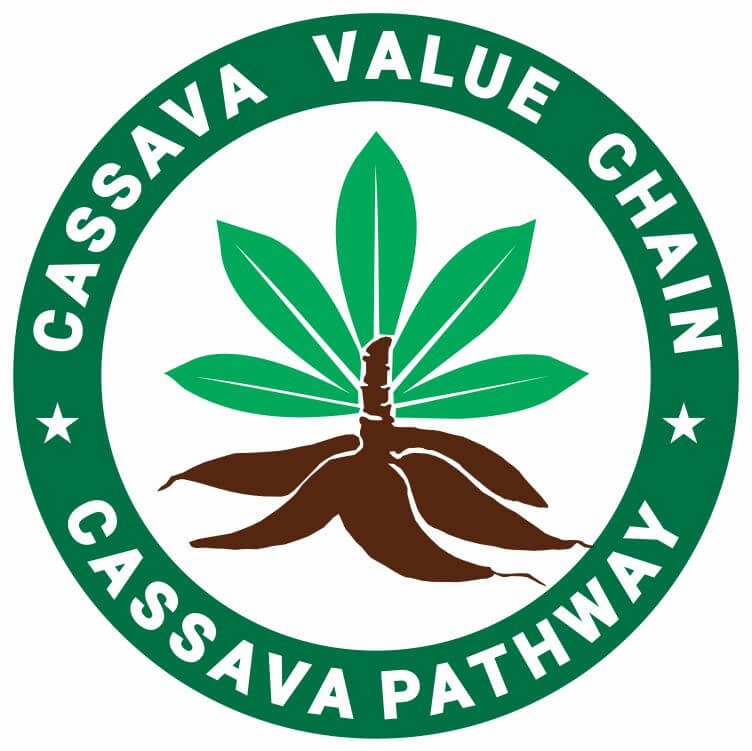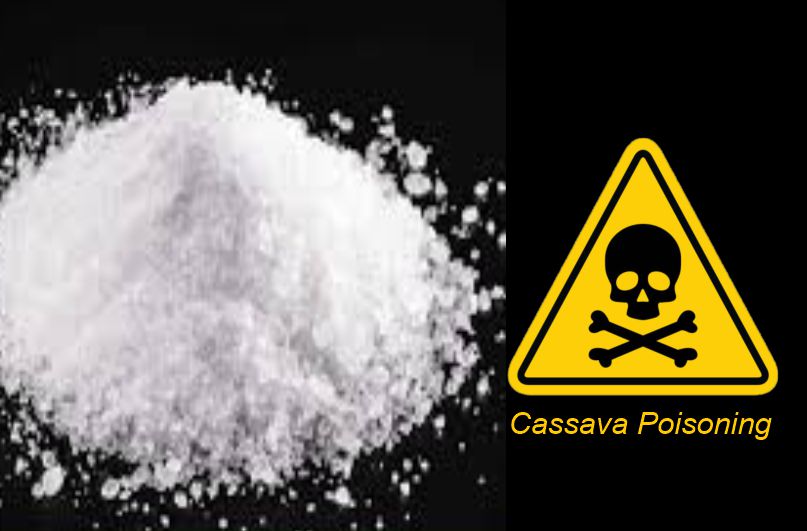Cassava, also called manioc, mandioca or yuca is celebrated for its nutritional benefits, but it harbors a hidden danger: cyanide poisoning from cassava.
This poses a risk of cyanide poisoning, particularly in communities relying on cassava tuber as a primary food source.
Understanding how cyanide forms, the symptoms of poisoning, and safe preparation methods is important for protecting health.
In this guide, we’ll talk about the science behind cassava’s toxic potential, its impact on human health, and practical steps to ensure its safe consumption.
Stay informed to enjoy cassava safely and responsibly!
Table of Contents
- Cyanogenic Glycosides in Cassava Poisoning and Factors that Increase its Toxicity
- How to Identify Cassava Cyanide Poisoning
- How Cyanide Poisoning Occurs
- Populations at Risk
- Preventing Cyanide Poisoning
- Treating Cyanide Poisoning from Cassava
- Conclusion
Cyanogenic Glycosides in Cassava Poisoning and Factors that Increase its Toxicity
According to Medical News Today, cassava contains naturally occurring cyanogenic glycosides, primarily linamarin and lotaustralin.
Cyanogenic glycosides
Cyanogenic glycosides are natural compounds found in cassava that can release cyanide when metabolized.
The two primary cyanogenic glycosides in cassava are linamarin and lotaustralin, concentrated mainly in the tuber’s outer layers.
Upon ingestion or improper processing, these compounds are broken down by enzymes, producing hydrogen cyanide (HCN), a potent toxin.
Bitter cassava varieties contain significantly higher levels of linamarin and lotaustralin, increasing the risk of cyanide poisoning if not adequately detoxified through methods like soaking, fermenting, and boiling.
These glycosides serve as natural defense mechanisms for the plant but require careful handling to prevent severe health risks.
Cassava Type
When cassava is ingested, particularly the bitter varieties, these glycosides can be converted into hydrogen cyanide (HCN), a potent toxin.
The release of HCN occurs during the processing or digestion phase, posing health risks if the cassava is consumed without adequate treatment.
The concentration of cyanogenic glycosides and the potential for cyanide poisoning varies between cassava varieties.
Bitter cassava, known to have higher levels of these glycosides, is particularly alarming for communities relying on cassava as a primary food source without appropriate detoxification methods.
Conversely, sweet cassava contains lower levels of cyanogenic compounds, making it a safer alternative when properly processed.
This variation emphasizes the importance of understanding the type of cassava being consumed, along with the necessary preparation techniques to mitigate risks.
Environmental and Agricultural Factors
Environmental and agricultural conditions also play a vital role in the toxicity levels of cassava.
Factors such as soil type, climate, and cultivation method can affect the concentration of cyanogenic compounds in the roots.
For instance, cassava grown in nutrient-deficient soil may produce higher levels of toxins as a stress response.
Additionally, prolonged periods of drought or unsuitable growing conditions can exacerbate this issue.
As such, evaluating local growing practices and environmental conditions is paramount for ensuring the safe consumption of cassava.
Improper Harvesting
Moreover, improper harvesting and storage practices can further increase the risk associated with cassava consumption.
Roots that are left in the ground for extended periods may accumulate more toxins, and those that have been poorly stored may undergo enzymatic changes that increase their cyanide content.
Therefore, it is essential to consume cassava that has been properly processed and to verify the variety before considering raw consumption. Only through thorough identification and understanding of these factors can one ensure safety when dealing with this nutritious yet potentially hazardous root vegetable.
Recommended: How Much Raw Cassava Can Kill You?
How to Identify Cassava Cyanide Poisoning
Symptoms of cyanide poisoning from cassava can be slow or immediate depending on the severity and body system.
I remember during childhood; some kids were raw cassava with palm kernels and a particular child reacted by consistent purging which landed him in the hospital for several days.
Here are some of the symptoms that are noticed when cyanide poisoning from cassava happens:
Acute Symptoms
- Cyanide poisoning from cassava consumption can cause acute symptoms that appear shortly after eating improperly processed cassava. Initial signs include dizziness and severe headaches.
- These may quickly escalate to nausea, vomiting, and difficulty breathing as cyanide impairs respiratory function.
- Tachycardia, or an increased heart rate, is another critical symptom, as the body tries to compensate for oxygen deprivation caused by cyanide’s disruption of cellular respiration.
- In severe cases, symptoms can progress to convulsions, loss of consciousness, and even death without prompt medical intervention.
Chronic Effects of Cyanide Exposure
- Chronic cyanide exposure is a concern in communities relying heavily on cassava without proper preparation.
- One severe consequence is konzo, a neurological disorder causing spastic paralysis that drastically reduces mobility and quality of life.
- Repeated exposure may also lead to lasting neurological damage, affecting cognitive and motor functions.
- The risks of both acute and chronic symptoms highlight the importance of safe cassava preparation to prevent poisoning.
Related: Cassava Nutrition Information
How Cyanide Poisoning Occurs
When consumed, the improperly processed cassava releases toxic hydrogen cyanide into the body.
Various scenarios contribute to cyanide poisoning, creating significant public health concerns, particularly in regions heavily reliant on cassava as a staple food source.
Food Scarcity
One prevalent scenario occurs during periods of food scarcity or famine when people may resort to consuming raw cassava or inadequately processed tubers due to a lack of alternative food sources.
During such times, the urgency for caloric intake can overshadow the essential knowledge regarding proper cassava preparation techniques.
This desperation can lead to elevated risks of cyanide poisoning, as individuals may not fully understand the necessity of detoxifying cassava through adequate soaking, drying, or cooking processes.
Lack of Education
Additionally, certain regions may have limited access to educational resources or training on cassava processing, further exacerbating the risk of poisoning.
Communities that rely on cassava but lack comprehensive knowledge about its safe preparation methods often experience sporadic outbreaks of cyanide poisoning.
In some cases, cultural practices or traditional recipes may not prioritize proper processing, leading to the inadvertent intake of cyanide-laden cassava dishes.
Recommended: Can Cassava be Eaten Raw?
Populations at Risk
Cyanide poisoning from cassava is prevalent in sub-Saharan Africa and certain countries in South America, where communities rely heavily on cassava as a primary source of carbohydrates.
Given its widespread consumption, it is essential to identify populations that are particularly vulnerable to the toxic effects of cassava, especially those varieties that are higher in cyanogenic glycosides, such as bitter cassava.
Children
Among the most at-risk groups are children, who may be more susceptible to the toxic effects due to their smaller body size and the developing nature of their systems.
Dietary habits in many regions may result in higher cassava intake among children, increasing their risk for cyanide exposure.
Pregnant women also face heightened vulnerability, as cyanide can severely affect fetal development and may lead to complications during and after pregnancy.
Thus, these groups require special attention, with an emphasis on reducing their exposure through education and dietary modification.
Malnourished Individuals
Additionally, malnourished individuals constitute another vulnerable population.
In areas where nutritional resources are scarce, reliance on cassava can exacerbate the risks associated with its cyanide content.
Malnourished persons may not have adequate nutritional defenses against the harmful effects of cyanide, increasing their susceptibility to poisoning.
Communities Using the Bitter Cassava
Also, communities that predominantly utilize the bitter varieties of cassava are at greater risk, as these types inherently contain higher levels of cyanogenic compounds, necessitating effective methods for detoxification before consumption.
Preventing Cyanide Poisoning
To effectively prevent cyanide poisoning from cassava, proper preparation techniques aimed at minimizing or removing cyanogenic glycosides present in the tuber must be followed.
Thoroughly peeling cassava is crucial to reduce cyanide exposure, as the skin contains toxic compounds.
Washing the roots under running water further eliminates contaminants. Fermenting cassava helps break down harmful glycosides, improving both flavor and safety.
Drying cassava also lowers cyanide risks, making it safe for storage and use. Boiling the root for an adequate time reduces the remaining toxins.
Awareness campaigns are vital in educating communities on safe cassava preparation methods, and promoting low-cyanide varieties can offer a safer alternative.
These combined approaches help reduce cyanide poisoning, especially in regions where cassava is a staple food.
Treating Cyanide Poisoning from Cassava
Cyanide poisoning from improperly prepared cassava is a serious health emergency requiring swift action.
Here’s a breakdown of the steps to take and the treatments involved.
Immediate Actions to Take
If cyanide poisoning is suspected:
- Stop consuming cassava products immediately.
- Seek medical help urgently.
- Prompt medical intervention can dramatically improve recovery and minimize complications.
- Medical Treatment at the Hospital
- Upon arrival at a healthcare facility, doctors will assess the severity of the poisoning and begin treatment, which includes:
Cyanide Antidotes
- Sodium Thiosulfate: Converts cyanide into thiocyanate, a less toxic compound that the body can easily excrete.
- Hydroxocobalamin: Used in severe cases, this binds to cyanide to form a harmless compound, assisting in detoxification.
Supportive Care
- Oxygen Therapy: Enhances respiratory function.
- Stabilization Measures: Manage heart rate, and blood pressure, and address critical complications such as respiratory failure or cardiac arrest.
Recognizing the Symptoms
Early identification of cyanide poisoning can save lives. Watch for symptoms like:
- Dizziness
- Headache
- Confusion
- Difficulty breathing
Prevention is Key
Raising awareness about the risks of consuming improperly prepared cassava is essential.
Education campaigns can help reduce cases of cyanide poisoning by teaching safer preparation methods.
By acting quickly and spreading knowledge, we can prevent and effectively treat this potentially fatal condition.
Conclusion
Cyanide poisoning from cassava is a preventable yet dangerous health concern in regions where cassava is a dietary staple.
Understanding its risks and adopting safe preparation methods such as peeling, fermenting, boiling, and drying can reduce cyanide exposure.
Raising awareness through education campaigns and promoting low-cyanide cassava varieties are crucial in safeguarding vulnerable populations, particularly children, pregnant women, and malnourished individuals.
Early recognition of poisoning symptoms and prompt medical intervention can save lives.
By combining proper preparation, education, and proactive health measures, communities can continue to benefit from cassava’s nutritional value without compromising their well-being.
References:
- https://nifc.gov.vn/en/technical-news/prevention-of-cyanogenic-glycoside-poisoning-post2028.html
- https://www.gavinpublishers.com/article/view/cyanide-in-cassava-a-review
- https://vegetosindia.org/journal/vegetos/article.php?id=6532

